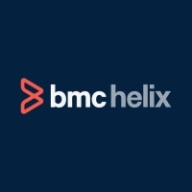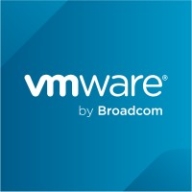

BMC Cloud Lifecycle Management and VMware Tanzu Platform are competing in cloud management and application development, respectively. VMware Tanzu Platform appears to have the upper hand due to its comprehensive feature set despite a higher cost.
Features: BMC Cloud Lifecycle Management provides robust automation, multi-cloud management, and efficient IT operations. VMware Tanzu Platform offers superior microservices support, application modernization capabilities, and a comprehensive suite for developers, which is a significant advantage over BMC.
Room for Improvement: For BMC Cloud Lifecycle Management, enhancements could be made in integration with diverse cloud ecosystems, expanding automation capabilities, and improving user interface intuitiveness. VMware Tanzu Platform could improve by simplifying deployment processes, better optimizing resource usage, and enhancing cost efficiency for smaller organizations.
Ease of Deployment and Customer Service: BMC Cloud Lifecycle Management is characterized by simpler deployment processes and proficient support, appealing to those seeking efficient onboarding. VMware Tanzu Platform, though more complex during deployment, offers exceptional documentation and dedicated professional services, benefiting long-term strategic goals.
Pricing and ROI: BMC Cloud Lifecycle Management offers attractive setup costs, appealing to budget-conscious buyers, and reports indicate favorable ROI timelines due to efficient multi-cloud management. VMware Tanzu Platform, though higher in initial costs, justifies the investment with seamless scalability and innovation potential, offering attractive returns for organizations prioritizing cutting-edge technology and long-term growth.
| Product | Market Share (%) |
|---|---|
| VMware Tanzu Platform | 1.1% |
| BMC Cloud Lifecycle Management | 0.9% |
| Other | 98.0% |

| Company Size | Count |
|---|---|
| Small Business | 10 |
| Midsize Enterprise | 3 |
| Large Enterprise | 10 |
BMC's cloud management platform drives digital innovation with agile, full-stack service provisioning across cloud and traditional platforms. BMC Cloud Lifecycle Management scales easily while integrating with essential compliance and governance policies to reduce risk.
VMware Tanzu Platform is designed for cloud-native development and management of Kubernetes, CI/CD processes, microservices, and containerized workloads. It supports deployments both on cloud and on-premises, providing centralized management via Mission Control.
VMware Tanzu Platform offers seamless integration with vSphere, ESX, and vSAN, supporting centralized cluster management and lifecycle management. The platform provides a GUI for monitoring CI/CD pipelines and network policies, enhancing multi-tenancy and Day 2 operations. Users can easily manage Kubernetes clusters, monitor applications, and integrate with tools such as GitHub, GitLab, Cloud Foundry, and Azure. It ensures compliance and security for service providers, financial institutions, and businesses.
What are the key features of VMware Tanzu Platform?
What benefits and ROI should users look for in VMware Tanzu Platform reviews?
Industries such as financial institutions, service providers, and businesses requiring rigorous compliance and security deploy VMware Tanzu Platform. These entities benefit from centralized management, streamlined DevOps processes, and integrated tools, enhancing their capabilities in cloud-native developments and containerized workloads.
We monitor all Cloud Management reviews to prevent fraudulent reviews and keep review quality high. We do not post reviews by company employees or direct competitors. We validate each review for authenticity via cross-reference with LinkedIn, and personal follow-up with the reviewer when necessary.